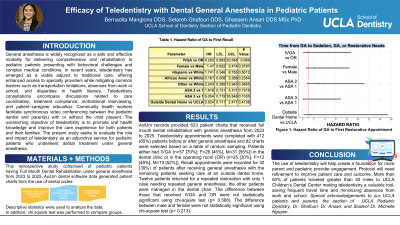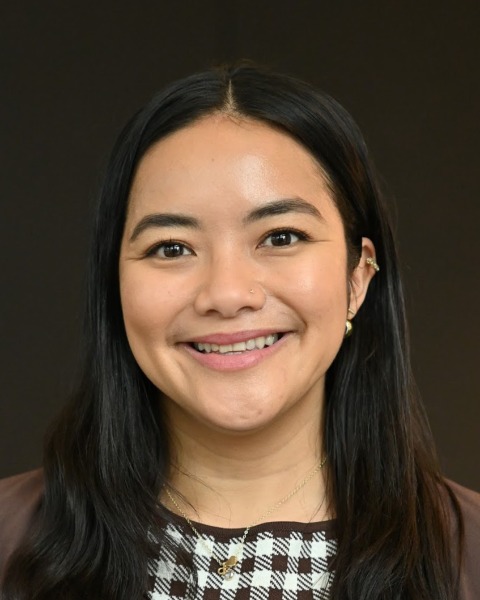Patient Management
349 - Efficacy of Teledentistry with Dental General Anesthesia in Pediatric Patients


Bernadita Ann A. Manglona, DDS (she/her/hers)
Pediatric Dental Resident
University of California Los Angeles
University of California Los Angeles
Beverly Hills, California, United States- GA
Ghassem Ansari, D.D.S., M.Sc., Ph.D., A.P.P.D
Clinical Professor
University of California, Los Angeles
Los Angeles, California, United States - SG
Setareh Ghafouri, DDS
University of California, Los Angeles
Los Angeles, California, United States - SG
Setareh Ghafouri, DDS
University of California, Los Angeles
Los Angeles, California, United States - GA
Ghassem Ansari, D.D.S., M.Sc., Ph.D., A.P.P.D
Clinical Professor
University of California, Los Angeles
Los Angeles, California, United States
Presenting Author(s)
Co-Author(s)
Research Mentor(s)
Program Director(s)
Efficacy of Teledentistry with Dental General Anesthesia in Pediatric Patients
Manglona, B., Ghafouri, S., Ansari, G.
Section of Pediatric Dentistry, University of California Los Angeles School of Dentistry, Los Angeles, California
Purpose: This retrospective study aims to improve the dental knowledge and experience for parents and patients with 1 or more attempts of full mouth dental rehabilitation under general anesthesia. This study evaluates the impact of teledentistry as an adjunctive service provided for patients who received general anesthesia. Teledentistry appointments include compliance barriers, care coordination, motivational interviewing, and patient/parent education.
Methods: Charts from AxiUm dental software were reviewed. Pediatric patients 0-21 years having FMDR 1 or more times under general anesthesia from 2023 to 2025. A list of patients were generated from use of dental codes including HOSP-OR and D9239 (IV moderate/first 15 minutes) with D9995 Teledentistry. Subsequent dental codes were reviewed to evaluate patients’ experience after dental general anesthesia. Data will be analysed using basic statistics.
Results: A total of 633 patient records were identified, of which 412 patients (65%) received a teledentistry consultation either prior to or following their GA procedure. From these, 82 charts were selected for detailed evaluation through a random sampling method. Patients were stratified by the type of anesthesia encounter—either intravenous general anesthesia (IVGA) performed in the dental clinic or operating room (OR)-based GA.Post-anesthesia follow-up data revealed that 39% of patients returned for recall visits at UCLA. Notably, twelve patients required further dental restorations, with only one necessitating a second GA procedure. The remaining were successfully managed in the dental clinic setting without further sedation. No statistically significant differences were observed between anesthesia settings (IVGA vs OR), gender, or ASA classifications (all p-values > 0.2).
Conclusion: It is expected that parents who had received teledentistry services could benefit their child’s care and reduce future dental needs.

.jpg)